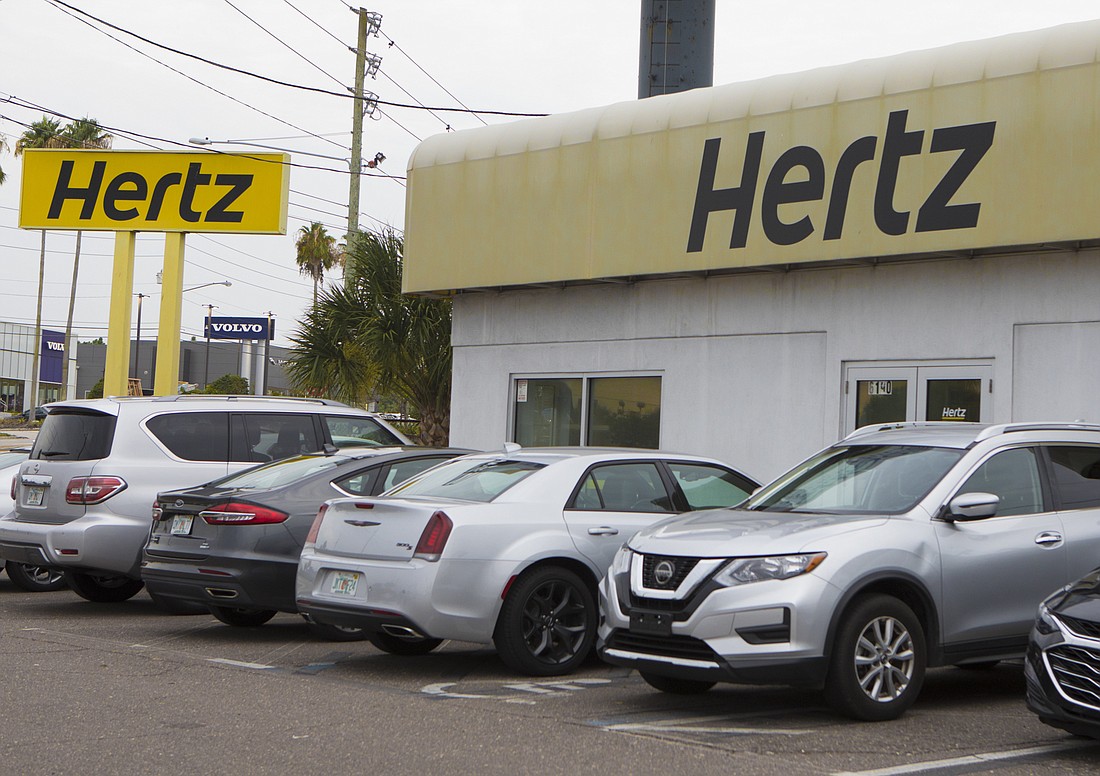- April 17, 2025
-
-
Loading

Loading
 Photo by Mark Wemple
Photo by Mark Wemple
The Hertz Corp. is selling off 20,000 electric vehicles, just a bit more than two years after it announced a major investment in Tesla and signed one of the world’s most famous athletes to promote its initiative.
In a U.S. Securities and Exchange Commission filing Thursday morning, the Estero-based car rental company says it is getting rid of the vehicles by the end of the year as it looks to eliminate a “disproportionate number of lower margin rentals and reduce damage expenses associated with EVs.”
A portion of the proceeds will go toward buying gasoline-powered vehicles.
The company says in the filing that the sale will increase revenue and reduce depreciation and operating expenses across its fleet. The move, it says, will save it $250 million to $300 million between 2024 and 2025.
Hertz did not disclose exactly how many electric vehicles it currently has in stock but says the sale will eliminate about one-third of its EV fleet.
The move away from electric vehicles and back to gas powered ones follows an announcement in October of 2021 that Hertz was buying 100,000 Tesla’s and that it would install 3,000 EV charging stations across its operations worldwide to support the fleet. At the time, it announced that NFL quarterback Tom Brady would be its pitchman.
A few months later, in April 2022, it expanded the program, announcing it would buy an additional 65,000 electric vehicles from the Swedish manufacturer Polestar.
In Thursday’s SEC filing, Hertz says the decision to sell off the EVs and replace them with gas-powered vehicles “will better balance supply against expected demand of EVs.”
The company is not completely stepping away from electric vehicles, though.
Hertz says in the filing that it will continue working on initiatives aimed at improving the profitability of its remaining EV fleet. That includes expanding its charging infrastructure and working with manufacturers to make access to parts and labor more affordable. The company says it will also keep adding “policies and educational tools to help enhance the EV experience for customers.”
“Going forward, the company will continue to actively manage the total size of its EV fleet, as well as the allocation of EVs among customer segments, including leisure, corporate, government and rideshare.”
Hertz’s revenue increased 8% in the third quarter of last year to $2.7 billion according to its most recent quarterly earnings statement released in October.
In that earnings statement, the company cited the “uncertainty with respect to the economics of electric vehicles, including those driven by customer demand, pricing, maintenance, incidence rate and cost of collision and damages, and residual value volatility” as a factor that could affect its future returns.